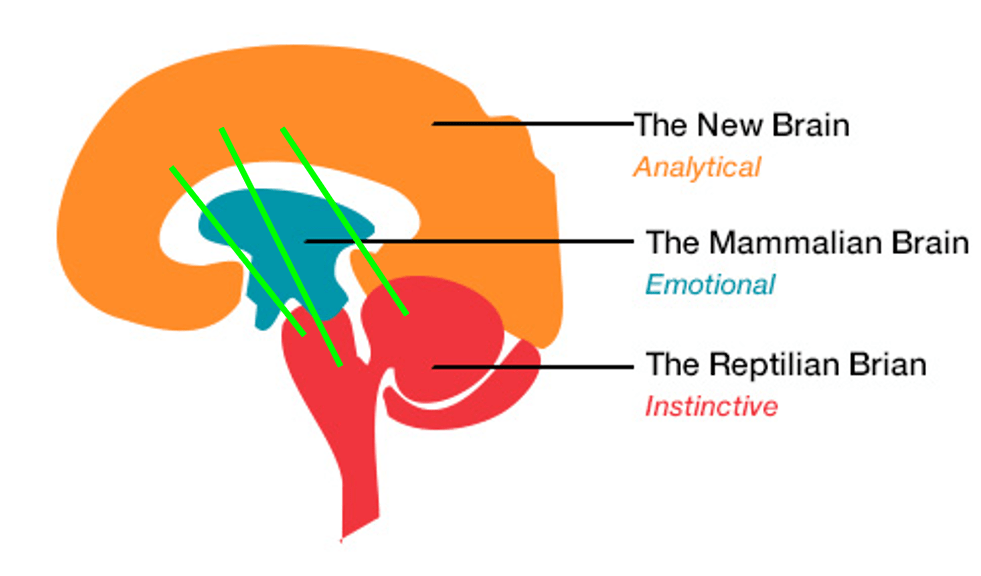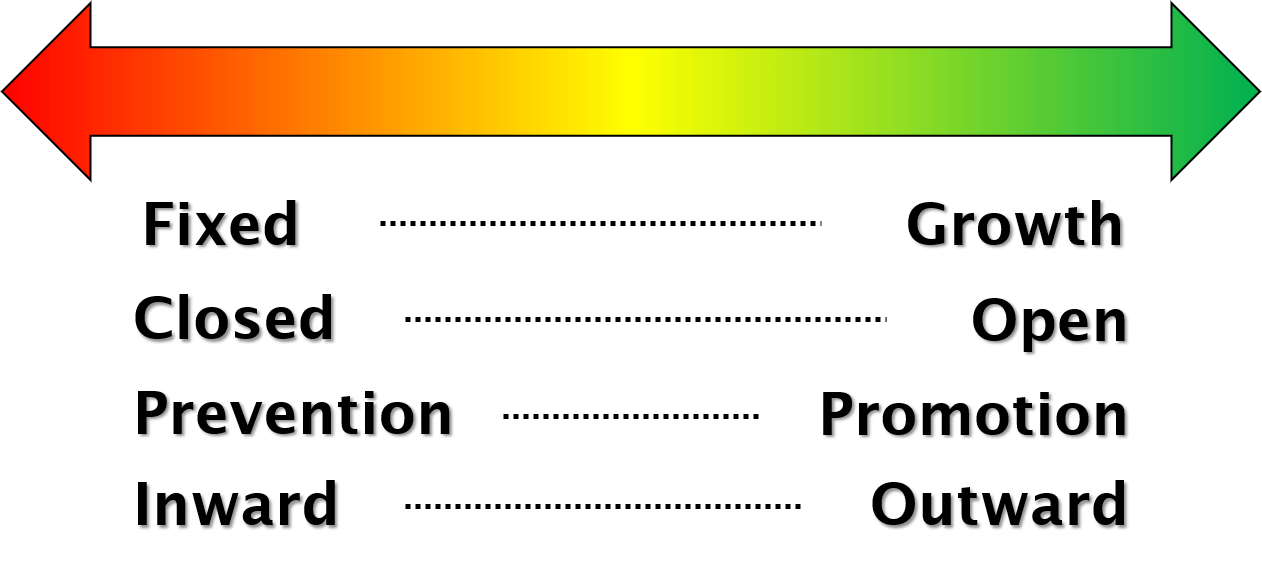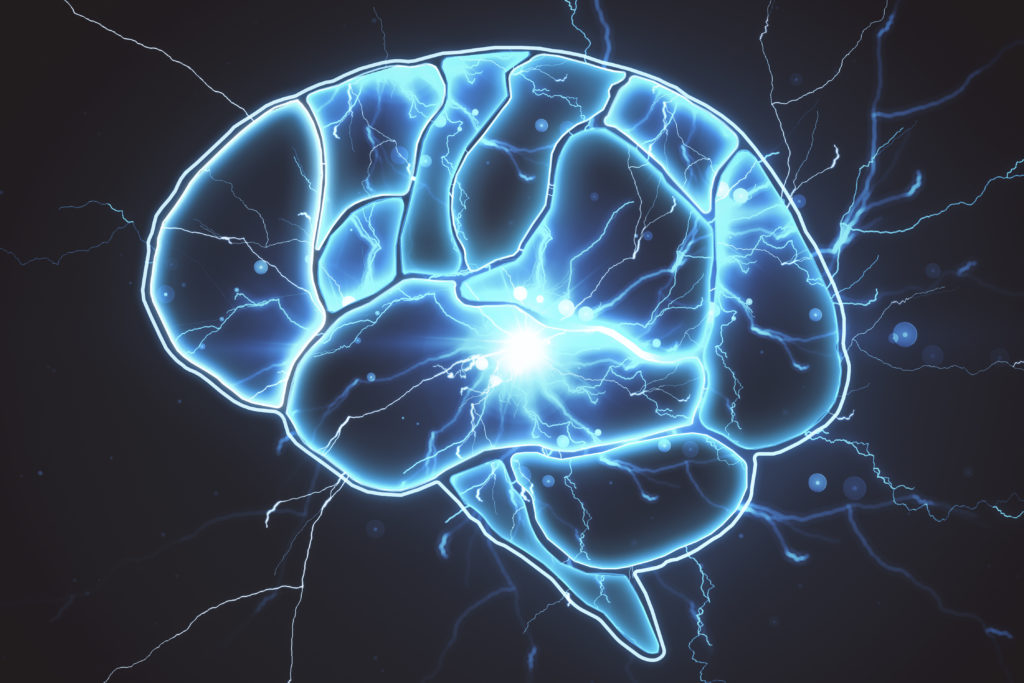What part of us is responsible for why we process and operate in the ways that we do? Our mind.
Yet, personal development efforts rarely focus on the mind.
With advances in both psychology and neuroscience, we know more about the brain than ever before. Although most of this learning has occurred in the past 10 years. Look at the chart below that tracks the number of neuroscience dissertations per decade (from Proquest).

If we can incorporate neuroscience into our development efforts, the implications are huge!
Let me walk you through how understanding the mind allows for the identification of the most effective personal development strategy.
Three Regions of the Mind
To start we need to identify the three regions of the mind.

Basal Ganglia (Reptilian Brain)
At the top of the spinal column is our most primitive brain region: the basal ganglia. It is also known as the “reptilian brain.”
The basal ganglia is in charge of body sensations and impulses. It is what rapidly gets us into fight/flight/freeze mode if it senses or interprets danger.
Limbic System (Mammalian)
The next layer up in the brain is also a primitive brain. It is called the limbic system and often described as the “mammalian brain.”
It is in charge of emotions, feelings, and implicit memory.
If we were negatively criticized by a parent growing up, and we are given constructive criticism by our manager, our brain will nonconsciously tap into our implicit memory that criticism is an attack, activating fear- and stress-emotions and related hormones (e.g., cortisol, oxytocin) to help you navigate that situation.
Neocortex (New Brain)
The large outer layer of our brain is our neocortex, also known as the “new brain.”
This is what sets us apart from our animal counterparts.
It is in charge of thought, verbal expression, and emotional intelligence. Everything below this brain region is largely instinctual and reactive. This is the part of our brain that allows for rationality and responsiveness.
For example, we may be given constructive criticism by our manager, causing our basal ganglia and limbic system to be triggered, flooding your body with feelings of stress. But, our neocortex is what allows us to settle these other regions by recognizing that constructive criticism can help us to learn, grow, and improve and there is no reason for our body to be fearful and stressed.
The Overarching Job of Mindsets in Our Mind
Our mindsets are long-range neural connections called cortico-cortical connections. What this means is that these neural connections span across the three different brain regions, integrating them.

Because of their integrative ability, they run what neurologists call our “Global Neuronal Workspace.” In other words, our mindsets overarching job is to serve as the circuit board for our brain, integrates our attention, evaluation, memory, verbal report, etc.
The Three Subarching Jobs of Our Mindsets
To help understand how our mindsets operate, we need to identify their three subarching jobs.
Subarching Job #1
Our body sends our brain 11 million bits of information per second. Where is most of this information coming from?
It is coming from our spinal column, right into our basal ganglia.
Unfortunately, our brain can only fully process 40 bits of information per second. So, the first subarching job of our mindset neural connections is to filter the most important and valuable information onto our limbic system and neocortex. This operation is primarily housed in our basal ganglia.
Subarching Job #2
Now that important and valuable information has been identified and sent on, we must do something with that information. So, the second subarching job of our mindset neural connections is to interpret that information. This operation is primarily housed in our limbic system, tapping into implicit memories, feelings, and emotions to help make sense of the information coming in.
Subarching Job #3
Having (1) filtered in information deemed important/valuable and (2) interpreted that information, the third subarching job of our mindset neural connections is to activate the different elements of who we are (e.g., personality, talents, self-regulation strategies) that will allow us to appropriately respond to that information.
4 Sets of Mindsets
Researchers across psychology, education, management, and marketing have been studying mindsets for 30+ years not knowing that they have really be researching the circuit boards for our brain.
Across this research, four primary sets of mindsets have been identified.

Each set explains how certain information is commonly filtered and interpreted, disposing individuals to process and behave in predictable ways.
For example, research on fixed and growth mindsets has repeatedly found that those with a fixed mindset (subarching job #1) are especially sensitive to signals that one might fail, (subarching job #2) interpret failure as though they are a failure, and therefore, (subarching job #3) are inclined to give up in face of challenges and failure.
On the other hand, research has repeatedly found that those with a growth mindset (subarching job #1) are especially sensitive to signals indicating that a circumstance is ripe with the opportunity to learn and grow, (subarching job #2) interpret challenges and failure as being beneficial to self, and therefore, (subarching job #3) are inclined to approach challenges and failure.
Harnessing the Power of Mindsets for our Personal Development
The good news is that there is much research (including neuroscience) that suggests that we are more than capable of altering our long-range neural connections so that our circuit boards are wired” for more effective processing and operating (and therefore, greater success).
I will be discussing how we do this in subsequent posts.
But, if you would like to assess the quality of your current mindsets, click here for a the most comprehensive and research-backed mindset assessment every compiled: Personal Mindset Assessment.
Further, if you want to explore how you can better tap into the mind in your organization’s employee, leadership, and cultural development efforts, click here: Connect with Ryan










